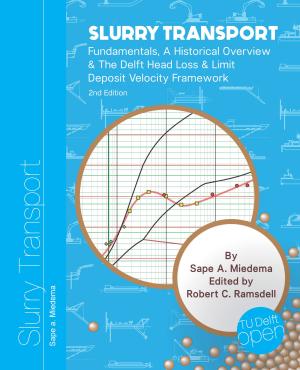Slurry Transport: Fundamentals, A Historical Overview & The Delft Head Loss & Limit Deposit Velocity Framework - 2nd Edition
Keywords:
slurry transport, flow regimes, hydraulic gradient, solids effect, dredging
Synopsis
In dredging, trenching, (deep sea) mining, drilling, tunnel boring and many other applications, sand, clay or rock has to be excavated.The book covers horizontal transport of settling slurries (Newtonian slurries). Non-settling (non-Newtonian) slurries are not covered.
Downloads
Download data is not yet available.

Published
October 29, 2019
Copyright (c) 2019 Sape A. Miedema
License

This work is licensed under a Creative Commons Attribution-NonCommercial-ShareAlike 4.0 International License.
Details about the available publication format: Download PDF
ISBN-13 (15)
978-94-6366-141-6


